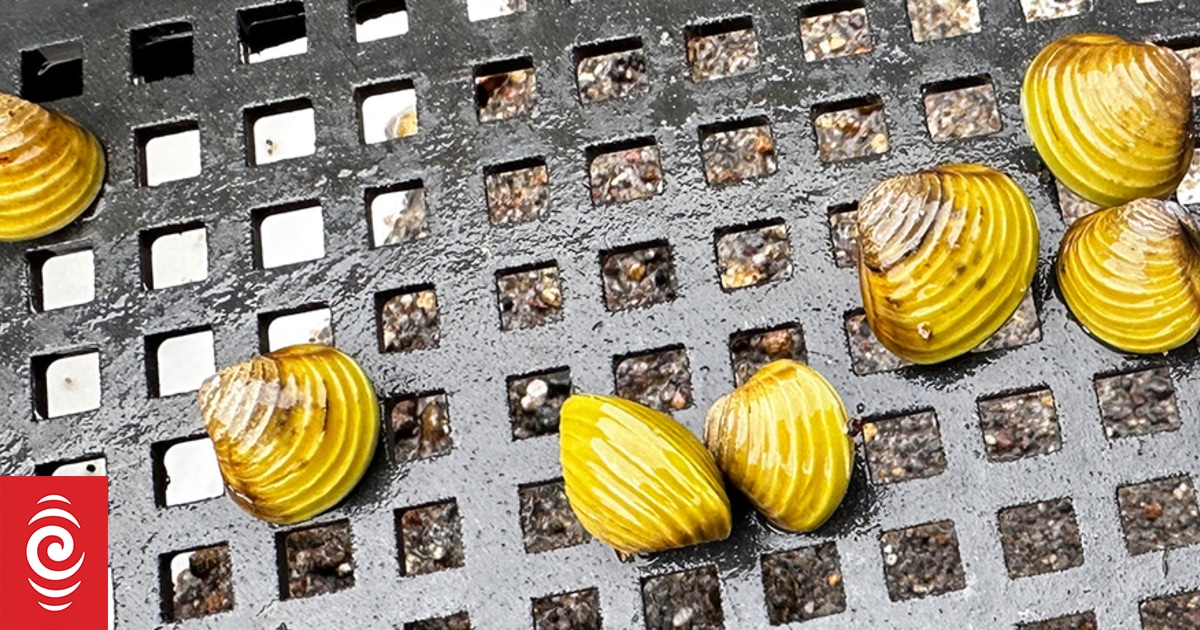
Biosecurity NZ has placed a controlled area notice over the Waikato River, from Whakamaru Dam to the river mouth at Port Waikato.
Photo: Supplied/ NIWA
Northland Regional Council, Kaipara District Council, Te Roroa iwi and Te Kuiki hapū are working together to ensure the Kai Iwi Lakes, and in particular Lake Tohoroa, stay free of the gold clam.
They will be carrying out biosecurity checks at the Kai Iwi Lakes from 22 December to 6 February.
“Preventing the spread of invasive species like gold clams upholds the mauri of our lakes and ensures they remain unspoiled for generations to come,” Te Kuihi spokesperson Ric Pārore said.
The gold clam was found in the Waikato River in April, and has already reproduced to hundreds of individuals per square metre.
Overseas, the gold clam has never been eradicated from an invaded waterway, and had reached densities of nearly 20,000 individuals per square metre.
“Kai Iwi Lakes are a taonga for locals and visitors,” Kaipara District Council general manager Hayley Worthington said.
Up to 2000 people visit the beloved Ka Iwi Lakes every day during summer.
The lakes are also home to two species at risk of extinction: a freshwater lily, and dune lake dwarf inanga fish, which is only found in 13 lakes on the West Coast of the North Island.
The gold clam can survive for up to 10 days out of water, so the usual check, clean, and dry methods between waterways are not enough.
Kayaks and wake boats are at the highest risk of spreading the clam.
Biosecurity New Zealand has placed a controlled area notice over the Waikato River, from Whakamaru Dam to the river mouth at Port Waikato.
This means wake boats from the area cannot be brought to any other waterways, including Northland.




